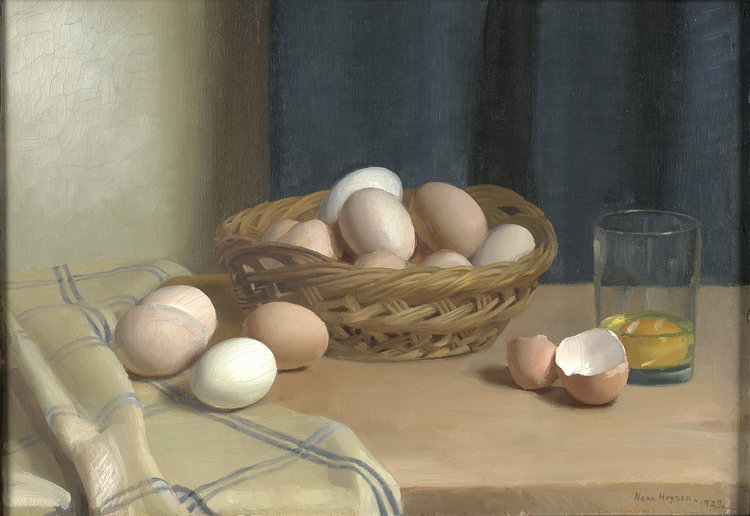
Nora Heysen was the very first woman to win the Archibald Prize for portraiture and was the first woman in Australia to garner an official war artist appointment. She studied at the Central School of Art in London where her appreciation for the work by French artists Camille Pissarro and Paul Cézanne transformed her classical style into a soft painterly mode of representation with free use of colour. In an interview in 1968 Heysen was quoted stating “I remember painting eggs at one time because Lambert had painted one egg and everyone was trying to do eggs. I thought I’d paint a whole bowl of eggs, not just one egg but I’d do a whole lot of eggs.” (1) Her painting explores the various properties of the foodstuff depicting the egg whole, broken, and the without the shell in a clear glass.
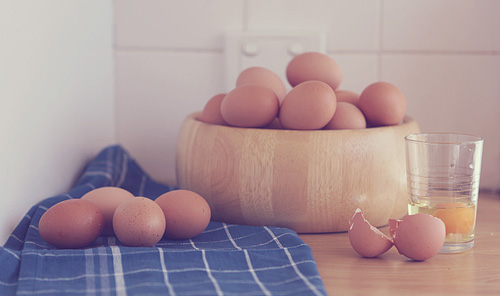
Invented to celebrate the arrival of the Russian ballerina Anna Pavlova, this light dessert was meant to represent the dress she wore while dancing. The origin of pavlova has been hotly contested between Australia and New Zealand but research shows that the first printed recipe came out of a rural New Zealand magazine. Regardless, the dish has become an important part of Australia’s national cuisine and is served at holidays and celebratory meals. The meringue is slow baked to form a gooey centre which is quite different from traditional meringue where the results are not so marshmallow-like (2).
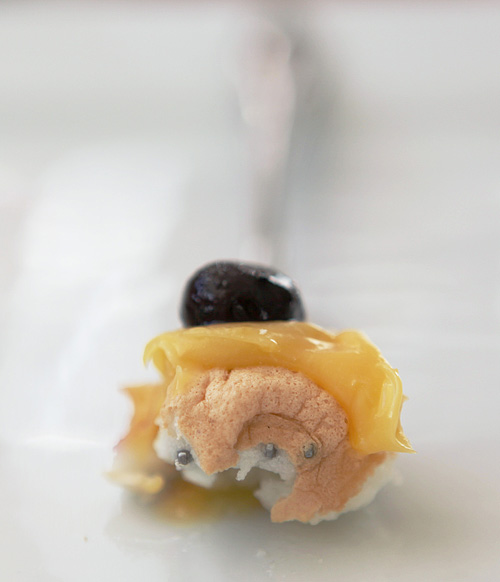
Pavlova with Lemon Curd and Blueberries
adapted from Gourmet
1 cup caster sugar
1 tablespoon flour
3 egg whites (save the yolks for lemon curd)
pinch of salt
3 tablespoon cold water
1 teaspoon white vinegar
lemon curd filling (recipe below)
1/3 cup double cream, whipped
2 cup blueberries
Preheat oven to 300°F/150ºC and line baking sheet with parchment paper. Whisk together the caster sugar and flour. In a separate bowl beat the whites with a pinch of salt until it forms soft peaks.
Add water and continue beating until the soft peaks form again. Increase the speed and begin adding the sugar/flour mixture 1 tablespoon at a time and continue beating 1 minute after the last bit of sugar is added. Add vinegar and continue beating at high speed until the meringue becomes glossy. Continue beating for 5 minutes longer.
Spread meringue on the parchment paper making a crater in the middle to hold the lemon curd once the pavlova has baked. Put on the middle rack of the oven and bake for about 45 minutes until it is golden brown but still soft in the middle.
Open oven door but leave the pavlova in it to cool for about 1 hour. Once the lemon curd has set, whisk in 1/3 cup of double cream to lighten. Transfer the meringue to serving platter and spoon lemon curd into the crater mound berries on top.
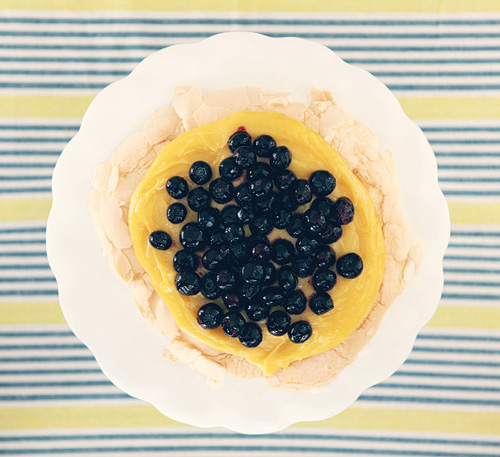
Lemon Curd
adapted from Gourmet
2/3 cup sugar
1 tablespoon flour
1/8 teaspoon salt
1/2 stick butter
1/3 cup fresh lemon juice
3 large egg yolks
2 teaspoon lemon zest
Stir together the sugar, flour and salt in a saucepan and then add the butter and lemon juice. Whisk over a medium-high heat and bring to a simmer. Whisk continuously for about 1 minute.
Beat the egg yolks in a bowl and add about a 1/4 cup of the simmering lemon mixture. Whisk the yolks and then slowly add the yolks with lemon to the rest of the lemon mixture.
Cook over low heat while whisking until the curd thickens (for about 2 minutes). Be mindful that you do not let the curd boil. Stir in the lemon zest and transfer to a bowl. Chill with some parchment paper over the top.
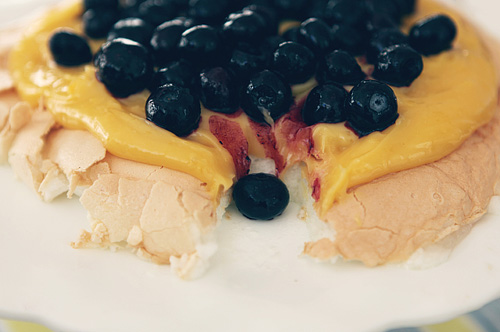

11 comments
Belle@Ooh, Look says:
Jul 6, 2009
I didn’t know about Nora Heysen, so I looked it up, and she’s the daughter of Hans Heysen. There you go! Your pavlova looks really luscious, too.
Karine says:
Jul 6, 2009
I also love the colors of the dessert! They are amazing… and the dessert seems delicious!
dessert girl says:
Jul 6, 2009
Mmmm…lemon curd…love the stuff! I’m actually typing this while eating my lemon yogurt!
Lucy T. says:
Jul 6, 2009
Love the painting, the pic, and the look of that pavlova. Want to eat that right now!
flintstone says:
Jul 6, 2009
The painting of the eggs is great, The egg in the glass is so realistic…
Indigo says:
Jul 7, 2009
This looks so good; I love lemon blueberries together! Such a good idea!
hungry dog says:
Jul 7, 2009
I’m with you–not generally a huge meringue fan–but I’ve always been drawn to pavlovas. Yours looks gorgeous.
Lorraine @ Not Quite Nigella says:
Jul 9, 2009
Ahh well I#39;m a huge meringue and pavlova fna so I#39;d dive right into this with two forks poised!
jonathan says:
Jul 10, 2009
Just the blueberries have made it perfect, but you add some egg yellow. What of perfect color and taste!
lisaiscooking says:
Jul 12, 2009
That is a beautiful composition, and it looks delicious! Blueberries with lemon curd sound fantastic.
Koelle Art Blog :: Chris + Annie Koelle says:
Feb 16, 2010
[…] with seeds. In a good way. And about the blog, haven’t made any of the food, but I must. The blueberry lemon curd pavlova insists I make it and the art is in such good taste. Dude, and I didn’t even intend that […]